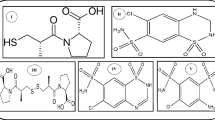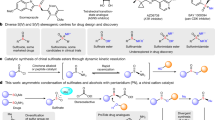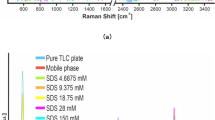Abstract
CHLORPROMAZINE is widely used in the treatment of mental illness, but little is known about its metabolic fate. This communication describes the discovery in the urine of dog and man of the sulphoxide derivative and some preliminary studies of its pharmacological properties.
This is a preview of subscription content, access via your institution
Access options
Subscribe to this journal
Receive 51 print issues and online access
$199.00 per year
only $3.90 per issue
Buy this article
- Purchase on SpringerLink
- Instant access to full article PDF
Prices may be subject to local taxes which are calculated during checkout
Similar content being viewed by others
References
Houston, D. F., Kester, E. B., and De Eds, F., J. Amer. Chem. Soc., 71, 3816 (1949).
Harrison, P. W. B., Kenyon, J., and Phillips, H., J. Chem. Soc., 2079 (1926).
Brodie, B. B., Shore, P., and Silver, S. L., Nature, 175, 1133 (1955).
Author information
Authors and Affiliations
Rights and permissions
About this article
Cite this article
SALZMAN, N., MORAN, N. & BRODIE, B. Identification and Pharmacological Properties of a Major Metabolite of Chlorpromazine. Nature 176, 1122–1123 (1955). https://doi.org/10.1038/1761122a0
Issue date:
DOI: https://doi.org/10.1038/1761122a0
This article is cited by
-
Examination of Urinary Excretion of Unchanged Drug in Humans and Preclinical Animal Models: Increasing the Predictability of Poor Metabolism in Humans
Pharmaceutical Research (2021)
-
Data-driven predictive model of reliability estimation using degradation models: a review
Life Cycle Reliability and Safety Engineering (2020)
-
Prediction of response to chlorpromazine treatment in schizophrenics
Psychopharmacologia (1975)
-
On the urinary elimination of methoxypromazine in man
Experientia (1959)
-
Papierchromatographischer Nachweis einiger Phenothiazin-Derivate im Harn
Klinische Wochenschrift (1956)



